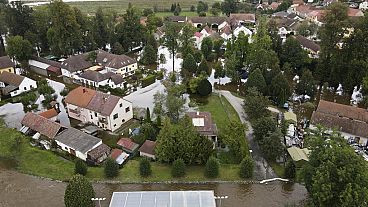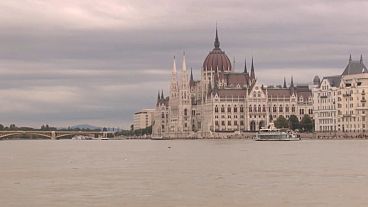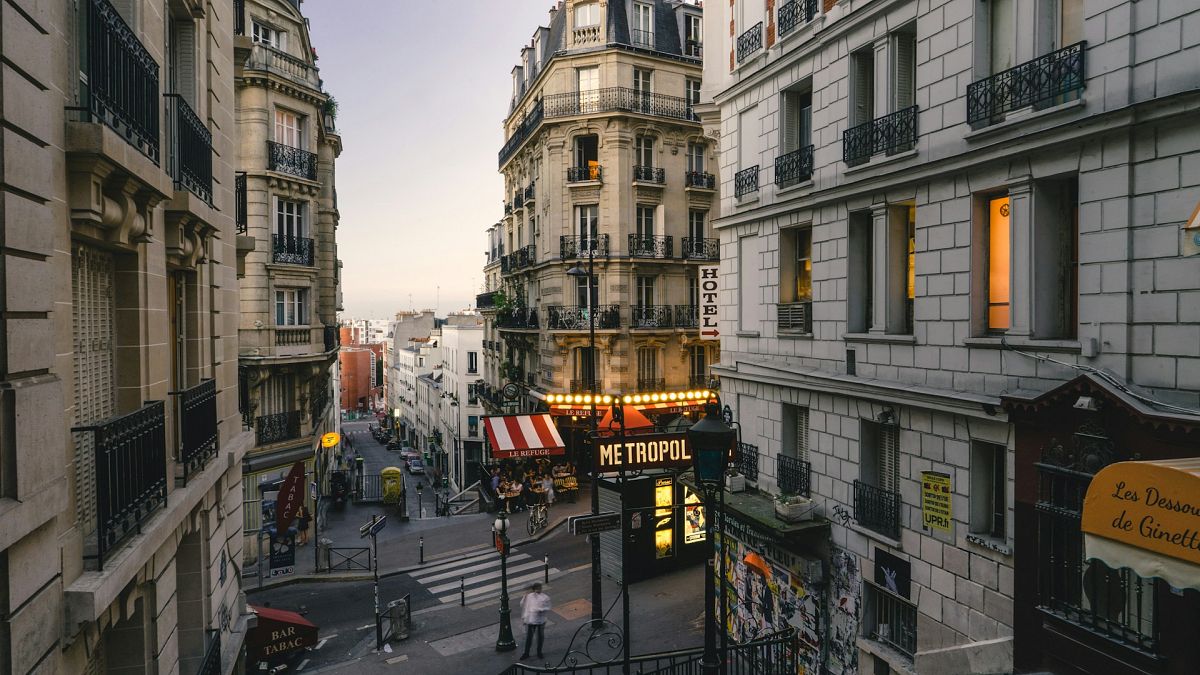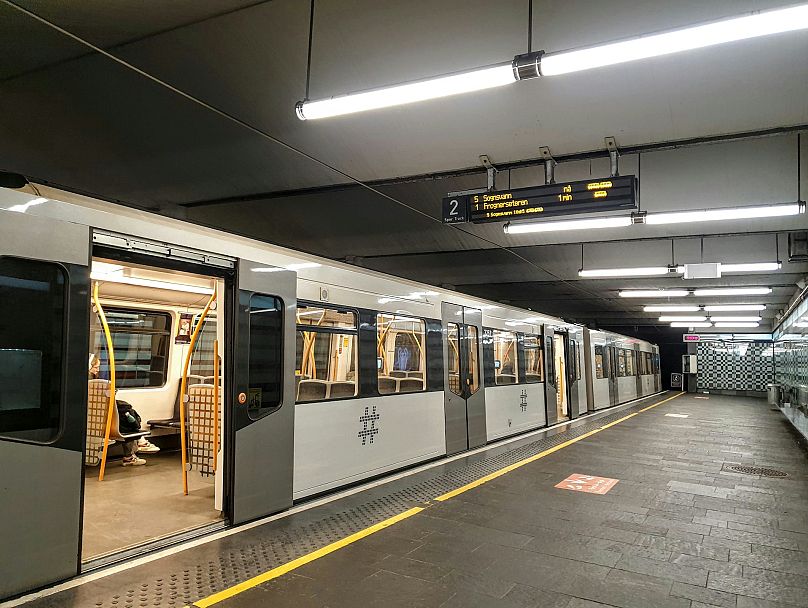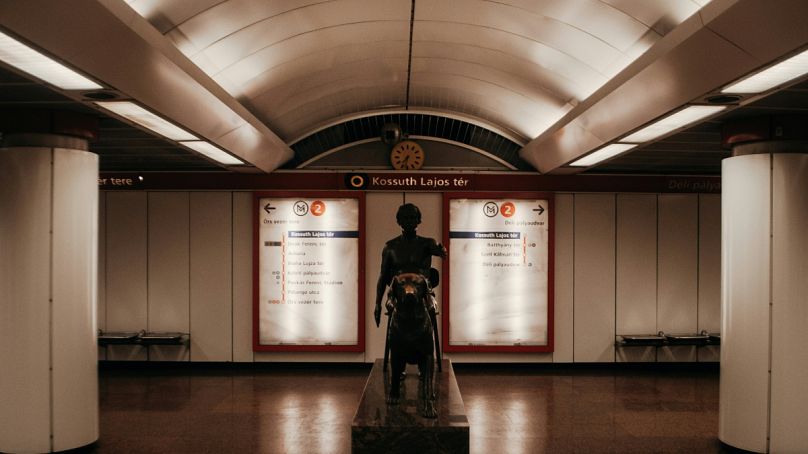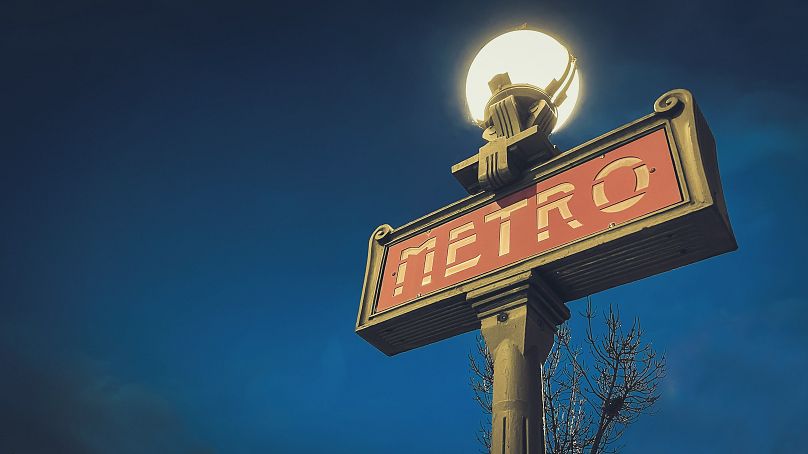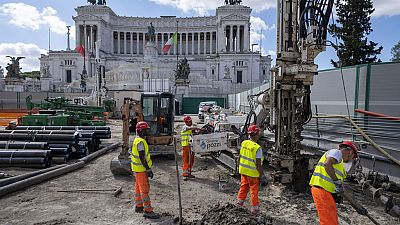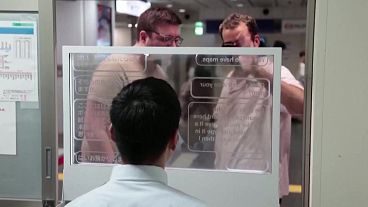This study reveals the best and worst European metro systems: Is your city on the list?
Have you ever wondered which European cities have the best, worst and busiest metro networks? New research reveals the answers.
Luggage storage company Bounce has looked into all of the services across the continent’s capital cities - and made some surprising discoveries.
While the London Underground is perhaps the most famous of all of Europe’s metro networks, it doesn’t even come in the top five best.
It lost points for its huge numbers of passengers and confusing layout, making it difficult for tourists to navigate.
In its research, the company considered a wide range of factors, from the average Google review score of stations and the distance covered by the system to the number of stations, the annual ridership, and the percentage of positive and negative online reactions to each service. The data was then combined into an ‘underground index’ score.
It’s important to note that Moscow and Kyiv’s metro systems were excluded due to the ongoing war in Ukraine, and Minsk metro was not included due to the US Department of State’s level 4 advisory against travel to Belarus.
Where has the best metro system in Europe?
Oslo came top of the ranking, with an index score of 8.06 out of 10.
The Norwegian capital’s system, known locally as the Oslo T-Bane or T-banen i Oslo, boasts 101 stations covering 85km of track. It serves all 15 of the city’s boroughs, as well as extending part-way into the neighbouring Baerum municipality.
The Oslo Metro comprises five separate lines - and another is currently under construction.
The system’s busiest station is Jernbanetorget. It’s part of the largest transport hub in Norway, along with the Oslo Bus Terminal, Oslo’s Central Station, and the attached tram station. Jernbanetorget itself has been described as “easy to get around”, “very well organised”, and “nice and clean” in its many online reviews.
Up next is Sofia’s metro system with an index score of 7.64 out of 10
The Bulgarian capital’s metro is the only one in the country as well as one of the youngest in the study, having only opened to passengers in 1998.
The city’s metro system covers 52km of track and is accessible via 47 stations, including one at Sofia Airport.
That particular station has a Google review score of 4.10 out of 5 and is a favourite with passengers, who say there’s plenty of English language signage, including payment instructions which, they say, makes it simple and accessible for foreign visitors.
Tourists and locals alike also enjoy the Aleksandar Malinov and Moesia/NBU stations, which both earned Google review scores of 4.70 out of 5.
Aleksandar Malinov station is situated in the Mladost area of southern Sofia and is frequently praised for its attractive architecture and decor, in particular the modern forest-like artwork that decorates one of its platforms.
The Moesia/NBU metro station, located in a suburban area of western Sofia has, according to reviewers, exceptional cleanliness.
Athens Metro offers cheap, quick and regular public transport
In third place is the Greek capital, with a score of 7.29 out of 10.
Athens Metro provides a direct link to the airport, which allows travellers to access the city centre with cheap, quick and regular public transport.
It also connects to the city’s busy Piraeus port area, which supports travel by ferry to many Greek island destinations.
The Athens Metro has 62 stations across 70km of track and sees more than a quarter of a million passengers every year, something that makes it an integral part of the city’s transport infrastructure.
The average Google review score for all metro stations in the city is 4.10 out of 5, although the busiest, Syntagma station, netted a score of just 3.50 out of 5.
Bounce says this is likely down to how busy it can be, although some reviews do praise it for being “modern, spacious, clean”, and others appreciate exhibits on the ticket hall level.
Rounding out the top 10 are Madrid in Spain and Warsaw in Poland, which received overall scores of 6.74 and 6.60 respectively.
The rest of the top ranking is made up of London’s Underground, Lisbon’s and Copenhagen’s systems, which scored equally, and Bucharest and Prague’s metros.
The worst metro systems are located in some of Europe’s most visited cities
Despite Budapest’s many charms, its metro is nothing to write home about.
In fact, the Hungarian capital’s offering has been given the dubious honour of the worst of its kind in Europe, with an index score of just 3.13 out of 10.
Although the Budapest metro system is relatively small, with 48 stations across 39km of track, it has a very large number of annual passengers at over 382 million.
While the average Google review score across all metro stations was a respectable 4.05 out of 5, 75 per cent of online reactions to articles about the metro system were “hate”, while just 1 per cent of reactions were “love”.
Határ út station is the city’s lowest-rated metro stop, earning a Google review score of just 2.80 out of 5.
The station receives a lot of criticism, with comments describing it as “a rather unpleasant place” and others saying it “looks pretty terrible”.
Cleanliness is another major complaint at the station, with reviewers bemoaning “a lot of garbage” everywhere, and others calling it “simply disgusting”.
The second worst metro service was found to be, perhaps surprisingly, Brussels’.
The Belgian capital, which has 59 stations along 40km of track, scored only 3.20 out of 10 on Bounce’s index.
Home to the European Union, the city has a busy metro that carries more than 86 million passengers a year - making it a vital part of the city's infrastructure while reducing traffic and congestion on the roads.
The busiest metro station, Gare du Midi, happens to be the lowest-rated, with a Google review score of just 1.90 out of 5.
Some reviewers have gone so far as to call the station the worst in Belgium and even Europe, saying it is “unsafe” and “dangerous”, with a shocking number of people referencing the strong smell of urine that travellers must contend with.
Rome’s metro system also scored poorly
Coming in just behind Brussels as having the third worst metro system in Europe is Rome.
The Italian capital’s metro may have 64km of track, spread across 73 stations, but it only received an index score of 3.75 out of 10.
While it is no doubt extensive and well-connected to other public transport options in the Eternal City, its metro stations received an average Google review score of just 3.60 out of 5, with only 13.21 per cent of stations receiving a score of four or above.
Additionally, 34 per cent of online reactions to news articles about the Rome Metro are “angry”, in contrast to “love” reactions, which account for just 9 per cent.
Quintiliani is the worst-reviewed metro station in Rome, with a score of only 2.40 out of 5.
Many reviews for this station reference the lack of staff and security, which, along with the “desolate” surrounding area, makes many travellers feel unsafe.
Station facilities, including elevators and ticket machines, have been referenced multiple times for being out of action, making travel here more difficult for passengers.
Some disgruntled passengers have called Quintiliani “the most useless station ever” and a “perfect example of a poorly looked after place”.
What is Europe’s largest and busiest metro system?
Bounce’s research revealed more than just the best and worst of metro services in Europe.
For instance, it found that the Paris Metro has 320 stations along its 245km of track - more than any other metro system in Europe.
It is also the busiest in the continent - after Moscow, not included in Bounce’s research.
Paris’ system frequently carries close to 1.5 billion passengers annually, which equates to roughly 4.1 million passengers every day.
As well as being world-famous, London’s tube system covers the greatest distance of all European metro systems.
The London Underground has some 402km of track which is served by 272 stations.
Each of the English capital’s 32 individual boroughs are well-served by the city’s system, colloquially referred to as ‘the Tube’.
It stretches well beyond the city limits, reaching into the surrounding counties of Hertfordshire, Buckinghamshire and Surrey. Around 1.2 billion people, living in the city centre or in commuter areas, use the Tube every year.
What is Europe’s least busy metro system?
London’s population is pushing 9 million, whereas Helsinki is closer to 600,000. It won’t surprise you, then, that the Finnish capital’s metro system is the least busy in Europe.
It’s also the smallest system in Bounce’s study, with just 30 stations, but it’s a well liked metro, with an average Google review rating of 4.07.
“Public transport in Europe is generally of a very high standard, relatively affordable and is often well-signposted with English-language directions and instructions, alongside the local language, making it more accessible and easier to use,” Cody Candee, CEO and Founder of Bounce, says.
“Travellers in Europe might go their entire trip without ever getting in a car. Many airports have their own metro or railway station with links directly to the city centre, while buses and metros can often take you to any part of larger cities.”
While not all metros are created equal, he adds, they all have something to offer: “Aside from being a quick and practical way of getting around, many metro stations have beautiful designs, and visiting them can be an experience in itself.”

